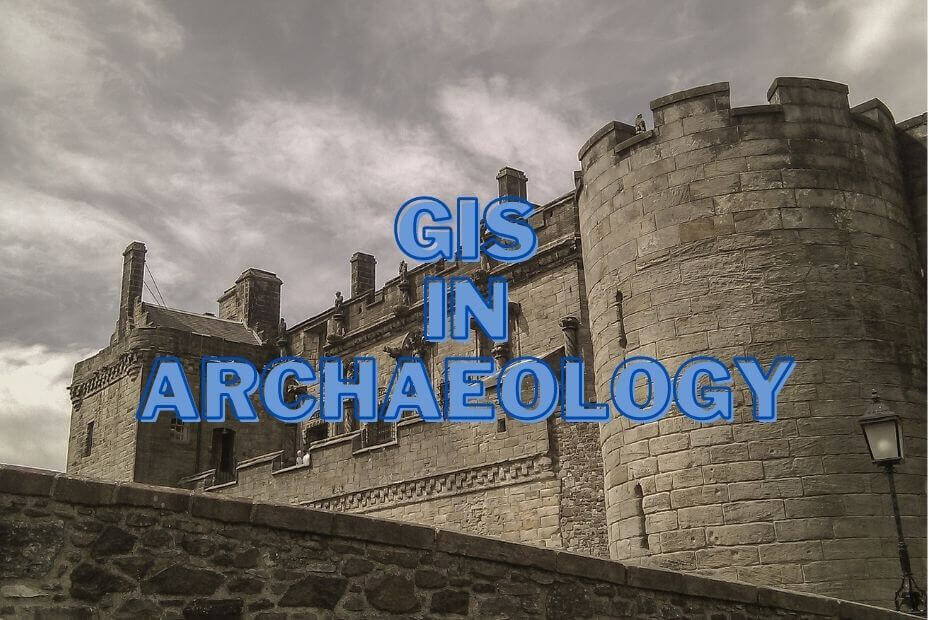GIS is primarily used for recording, analyzing, and storing information about spatial entities according to their geographic locations.
The use of GIS in archaeology is not limited to archaeological survey data. It can also be applied to different aspects of the archaeological practice such as site reconstruction, database management, object tracking and modelling, spatial analysis, environmental assessments and much more.
What Is GIS and How Does It Function In Archaeology?
GIS stands for Geographic Information Systems. GIS is a tool that can be used by archaeologists to study and preserve ancient artefacts.
GIS functions in archaeology by helping researchers to visualize the spatial relationships of artefacts.
Archaeological sites are a treasure trove of information about a culture’s history, way of life, and style of building construction. One can study these sites from above or below ground level, but for some areas, this is not possible because the site is underwater, deep underground, or inaccessible from any other angle.
In such cases, GIS provides an alternative method for analyzing archaeological sites by offering an aerial view of the site as well as its geographical position on the globe.
GIS also allows researchers to see how similar or different two sites are from each other based on their geographical positions.
What Is Archaeological Survey?
An archaeological survey is a process of collecting and analyzing data on an archaeological site to learn more about it. GIS helps archaeologists by mapping and modelling different types of data collected during an archaeological survey.
Survey LiDAR Data
Surveying is an important measure to take to make sure that the land is being used efficiently. It’s also important for taking accurate measurements of man-made structures.
The use of LiDAR data to generate 3D models has become more prevalent in recent years. These models can be used for many purposes such as understanding the volume of forests or other natural spaces, creating maps for navigation purposes, and assessing damage from natural disasters.
LiDAR surveying can be done with 3D point cloud data, but it must be combined with other methods like surveying points and ground control points. This data will then create a 3D model that can be used for many purposes.
Digital Terrain Modeling
Digital terrain modelling is a technique that helps to visualize the landscape and created a better understanding of where there are any archaeological sites.
The technique is also used for many other fields such as mining, geology, geography or environmental studies. DTM is usually done with the help of computer software such as ArcGIS or QGIS.
Digital terrain modelling can be used to explore unknown territory and find new archaeological sites without having to search on foot or by using drones.
Is GIS Used In Archaeology?
In archaeology, GIS is a tool that is used for mapping sites. It’s also helpful when finding the location of archaeological finds.
GIS can be used in a number of ways, but one of the most common is to create maps with a wide variety of layers, including geographical features and archaeological finds. This allows different specialists in archaeology to look at different layers and find what they are looking for more easily.
What Is The Importance of Using GIS In Archaeology?
The use of GIS in archaeology has given archaeologists a much clearer understanding of the landscape and its importance in prehistory. The ways in which these maps are used vary from site to site.
In some cases, it is used to excavate sites or monitor their migrations. In other cases, these maps are used to map the archaeological record from a specific time period or geographic region.
GIS mapping software has greatly helped archaeologists create a chronological view of history and its changes over time.
Studies have shown that through the use of GIS mapping software, archaeologists can predict future archaeology sites that would otherwise be undetectable using traditional methods such as aerial surveys or satellite imagery.
GIS can be used in various ways for archaeology, such as:
- 3D modelling: 3D modelling is a technique used in archaeology to reconstruct the landscape during different periods of occupation of a site.
- Studying natural processes: GIS software can be applied to study the natural processes that occur at sites over time, such as erosion or soil development.
- Reveal the patterns and stories in space and time.
- Linking archaeology with other sciences such as paleoecology, anthropological ecology, geology, etc.
Conclusion: GIS in Archaeology
The conclusion of this article is that GIS in archaeology has a very important role in research and archaeological work. GIS helps archaeologists to analyze and understand their data on a larger scale which is not possible on paper maps. Furthermore, GIS helps them to answer questions about the past which were impossible for them before due to lack of data or information.
